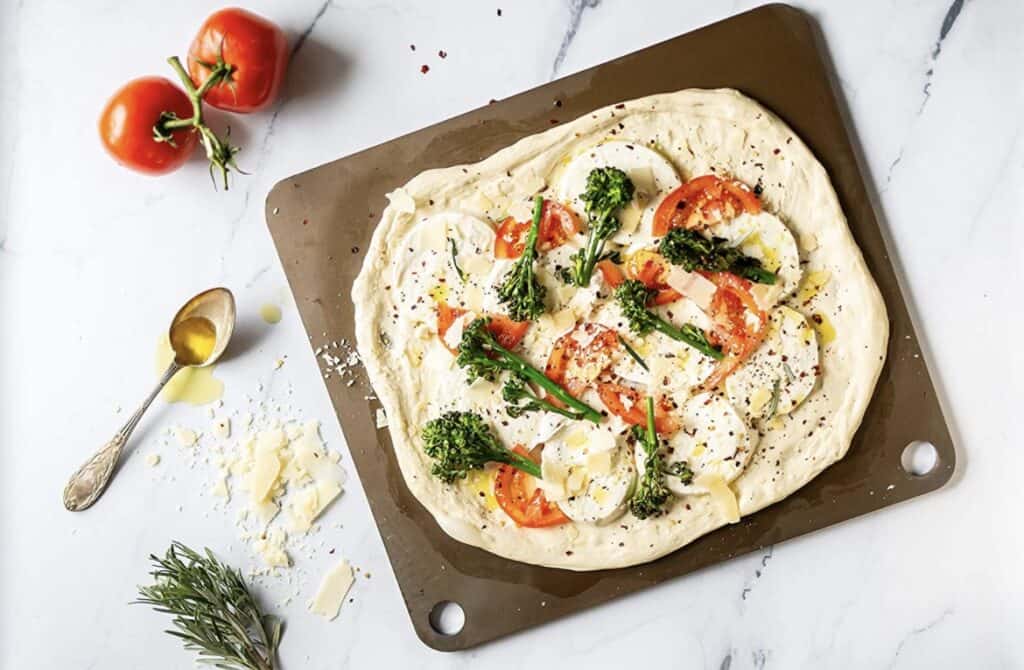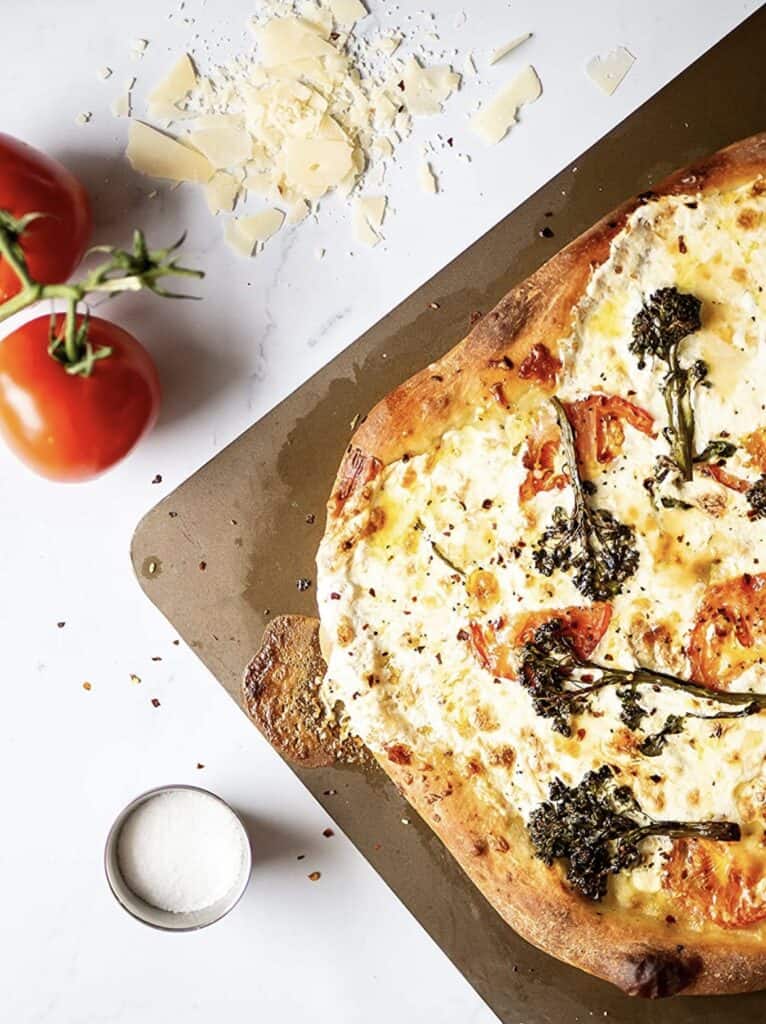Recently, I reviewed my experience with my Ooni Karu– a portable wood-fired oven that’s taken my pizza cooking to a whole new level. However, there have been a number of cold or rainy days when I haven’t been able to get outdoors to use my Karu. Whenever those situations arise, I usually find myself using my trusty pizza stone and my conventional oven. Recently, however, I’ve found something that works a lot better- a “pizza steel.”
Conductive Cooking’s pizza steel is a great alternative to traditional pizza stones. Although it’s a bit heavier, it prevents the pizza crust from sticking- a problem that can ruin pizzas. In addition, the pizza steel also helps to evenly cook the pizza so there aren’t any undercooked or overcooked spots.

There are a few different options on the market, but I have the 16”x16” square made by Conductive Cooking. Essentially, it’s a modern-day pizza stone that uses science and heat conduction technology to help produce a crispy, evenly cooked pizza. Here’s what I have to say about it after using it for a few months.
What Exactly Is Pizza Steel?
If you find yourself cooking homemade pizzas or frozen pizzas at home, then there’s a strong possibility that you already have a pizza stone. These traditional stone plates have been used for as long as pizza has been made. They use the conductive properties of the stone to help create a crispy-bottomed pizza that’s similar to what you’d eat at an authentic pizzeria.
A pizza steel is just a metal version of this. However, the steel has one key advantage over traditional pizza stones- they’re far more efficient at conducting heat. This means that your pizza should cook faster and that your crust will be crispier, resulting in that familiar brick oven pizza taste.
Do They Work As Advertised?

Admittedly, I was a bit skeptical. To me, it seemed like just another gimmick for aspiring pizza chefs to waste their money on. I’ve always used pizza stones, and I’ve had no problems with them in the past. So, that being said, my first response was, “why try to fix what’s not broken?”
Then again, I had just spent $100 on new pizza gear, so I figured why not. After a couple of days, it came in. I had some fresh dough, a bunch of cheese, and a great salami my cousin had just given me. So, I decided to test it out.
I didn’t doubt that it would work. However, I didn’t think that it was going to be any better than a stone. To my surprise, though, the steel was better. At first, I couldn’t tell much of a difference based on the appearance. However, after I peeled the pizza from the steel and took my first bite, I immediately realized the difference.
I’m a big fan of crispy pizza, so when I felt that first crunch, I was hooked. It was perfect. It tasted just like what I’m used to getting out of my Ooni oven (albeit without the added smoky flavor). Texture-wise, though, the pizza cooked on the steel was almost indistinguishable from the pizza I make in a real pizza oven. Needless to say, I was quite impressed.
What’s Better: Pizza Steel vs. Pizza Stone?

I have plenty of pizza stones, and I have no plans on throwing any of them away. However, I’ve found myself using my pizza steel far more often than my stones. I particularly like the fact that there’s an easy thumb-grip hole in the corner of the steel (that my stones don’t have).
The grip hole makes grabbing the sizzling-hot pan out of the oven a lot easier. In fact, just two weeks before I got my steel, I had a pizza stone slip out of my hand, shatter all over my floor, and lost a whole pizza. All because there’s nowhere easy to grip a pizza stone…
That’s actually another great point about the pizza steel- it’s shatterproof! I’ve only dropped it once, and based on my previous experiences, I was instinctively expecting something to break. However, it just clanged on the ground and made a loud noise. Nothing was broken thanks to the fact that it’s made from an ultra-strong conductive steel alloy.
Is The Pizza Steel Easy To Clean?
My steel is considerably easier to clean than my stone (a task I always try to avoid). Due to the properties of the alloy, the surface of the pizza steel is relatively non-stick. Whenever oil or cheese does build up on the steel, it’s easily removed with some warm water and a brush. On that note, you should not use soap on your steel.
Pro-Tip: Take Care of Your Pizza Steel
Your best bet is to treat your pizza steel like you would treat a wok or a cast-iron pan. Only clean using warm water and a brush. When you’re finished with the cleaning, you’ll also want to season the steel using some olive oil. This will protect the surface of the steel from the elements and keep it from oxidizing.